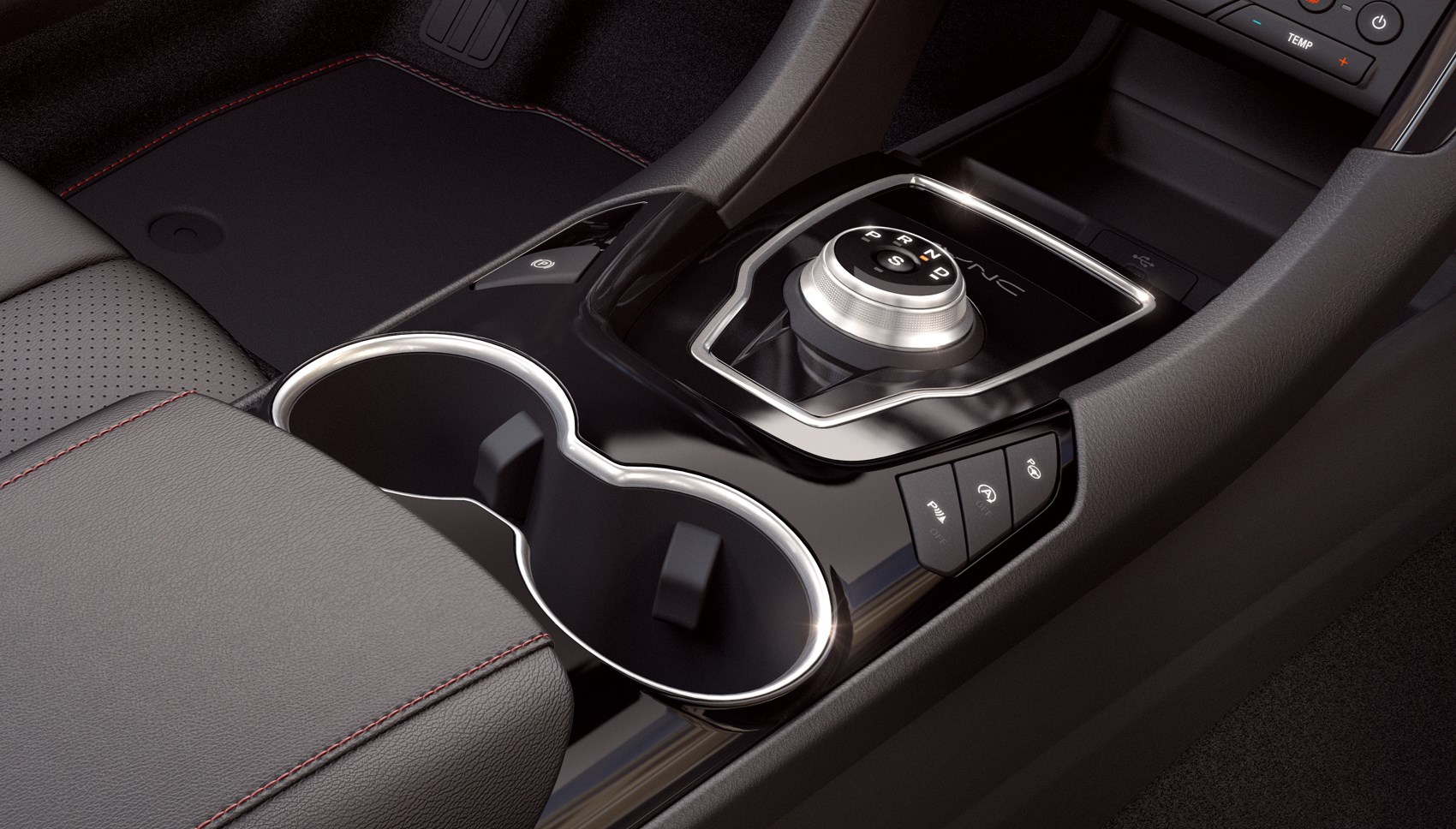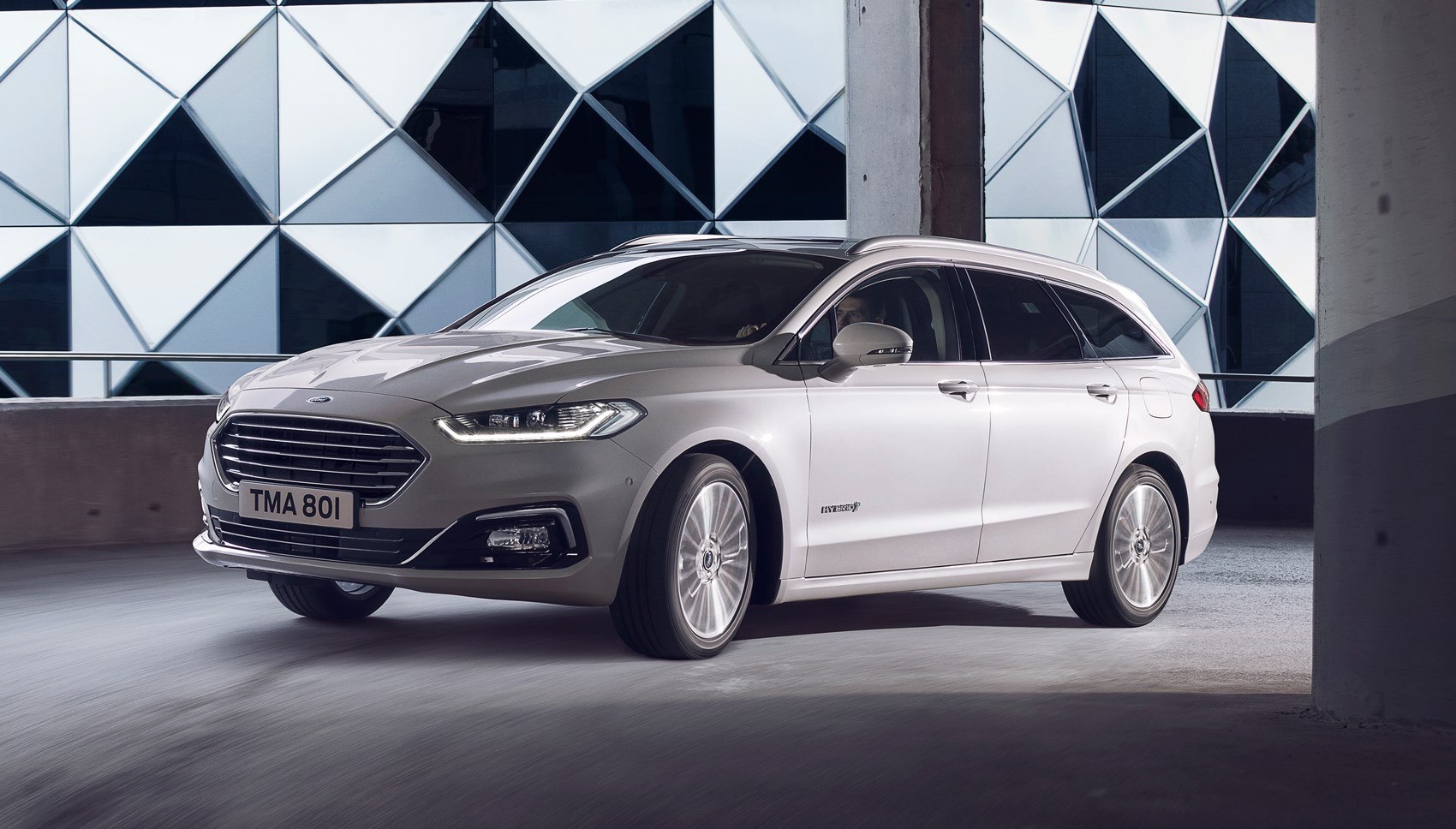► Ford’s hybrid estate driven
► Titanium or Vignale specs available
► Eco setup is for business users
Open the boot of the new estate version of the Mondeo Hybrid and the story of this disappointing car is there right in front of you. Instead of the big boot this comfortable, relaxed car provides in non-hybrid form, here you see a much-reduced luggage area. There’s a bizarrely large bulge, as if someone has hastily tried to conceal a couple of corpses under the carpet. It is, in fact, the battery and electric motor.
The fact that the hybrid element is so clearly an afterthought manifests itself not just as an unusual level of luggage-hostility for an estate car. It also results in the powertrain feeling like it’s at war with the rest of the car, and indeed with the driver.
It’s not all bad, especially if you’re a company driver concerned about benefit-in-kind taxation, although it doesn’t get free access to the London congestion charge area.
How does it fit into the line-up?
Once a byword for mainstream, mass-market motoring, the Mondeo has become an anachronism. A big, comfortable, non-premium five-seater, available as a hatch, saloon and estate – this sort of thing used to be everywhere. But after suffering heavy losses in skirmishes with the once-ascendant MPVs, everyman estates have been dealt something akin to a killer blow by the illogical but irresistible rise of the SUV.

The tardy arrival of the hybrid version of the Mondeo estate (two years after the saloon; there’s no hybrid hatchback) is unlikely to do much to slow the retreat. On the road and on paper there are pros and cons, but there’s nothing that will persuade a Kuga buyer that the Mondeo is better value, more practical and (at least in some ways) better to drive, even though it is.
The UK gets two versions of the Mondeo Hybrid Estate, the Titanium (£29,430) and Vignale (£32,850). They’re both at the upper end of Mondeo trim, and are pretty agreeable. Nothing cutting-edge – just the basics done well: lots of room front and rear, effective climate control, unchallenging infotainment and a calm, composed atmosphere.
Titanium gets leather upholstery, electric front seats, sat-nav, an 8in touchscreen and a smattering of safety-enhancing electronics.
Vignale comes with more luxurious trim and features including a powered tailgate and LED headlights.
What’s the hybrid hardware?
The battery and electric motor are in the boot, but the rear wheels aren’t driven. Like the naturally aspirated 2.0-litre petrol engine, the electric motor drives the fronts, with a power-split automatic transmission switching between the petrol engine, electric motor, both at once or neither.
It’s similar to the system you’ll find in many Toyotas, and like them the Ford set-up has impressively smooth changes between power sources. The power-split transmission works like a CVT rather than a torque-converter or dual-clutch auto, meaning there’s a tendency for the powertrain to feel like it’s not very interested in what your right foot is asking it to deliver. It won’t be hurried.

The battery gets its charge from surplus energy during braking or cruising, or you can engage the L gear setting – intended chiefly for controlling your speed in tricky downhill conditions – and force the engine to rev harder. Like the popular Toyota system, it’s not plug-in.
The saloon was criticised for the clumsiness of the regenerative braking system; it’s been improved for the estate, and now feels natural and responsive.
Inside, there are dials and diagrams intended to show you what the engine and motor are up to, and the state of the battery and fuel tank. But the graphics on Toyota and VW hybrids are much clearer and easier to interrogate.
What’s it up against?
The closest rivals are the VW Passat GTE (although that’s a plug-in hybrid) and the new Toyota Corolla Touring Sports (which is lighter and smaller in every dimension except the important one of boot capacity: it dwarfs the Ford by 598 litres to 403, seats up; the Ford has 1508 litres with the rear seats down – around 100 litres shy of the Toyota). An interesting comparison will arise when the mild-hybrid Focus Estate arrives; it won’t have the passenger space of the Mondeo, but that aside has the potential to be the better package.
How does it drive?
Like all Mondeos, the Hybrid Estate has decent cornering ability and ride quality. On both fronts, it’s better than either the Kuga or Ford’s larger SUV, the Edge. Completely non-coincidentally, it drives like a lower S-Max. It feels natural, predictable and reassuring. Easy in town, rewarding at higher speeds.
The problem is the power delivery. Hybrids don’t have to be this way, but Ford has chosen to set the Mondeo up entirely for economy. Throttle response is poor, and when the power does eventually turn up it seems uninterested in providing any driving pleasure. The graphics and dials may be telling you that the petrol and electric propulsion units are both in action at the same time when you’ve got your foot pressed into the mat, but it never feels like it. That’s quite a contrast to the Volkswagen system, which at its best gives the enjoyable sensation that you’ve gamed the eco tech and tricked it into helping you go fast.

The upside of all this is that you do get pretty good fuel economy for a big, heavy petrol car. That redeployed surplus braking energy helps you make a silent and frugal (if not a fast) getaway, and when you’re cruising on the open road the petrol engine will sometimes opt out briefly, and then ease itself back in when needed. That said, a regular diesel Mondeo Estate can be pretty economical too, although that doesn’t get the BiK advantages.
Ford Mondeo Hybrid Estate: verdict
At its best it has the virtues of any good Mondeo, and in our couple of days with the Hybrid, we got an average fuel consumption figure in the mid-40s. That’s not all all bad for a big-boned petrol estate.
But, unfortunately, that’s not the result of it being an inherently efficient design. It’s the result of the driver losing the will to keep battling against its flaws, and just driving slowly everywhere.
Ford is surely capable of building a much better eco Mondeo than this, but market trends suggest that may never happen. Shame.
Check out our Ford reviews